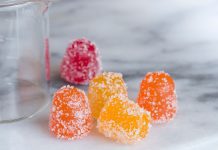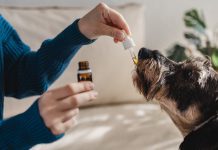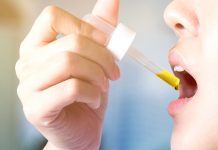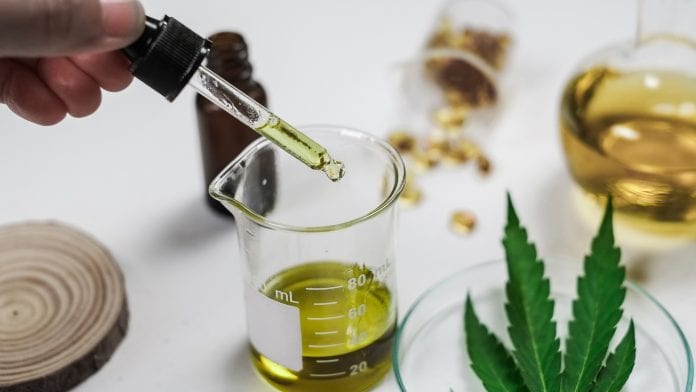
Cosaint Nectar CEO Philip Tarazi details the unique benefits of CBDA and how Cosaint’s industry leading innovation can support pain management.
If you have not experienced the power of CBDA, you are probably like most people, even the most experienced in the cannabis industry. Why? Because CBDA is an unstable molecule; and until now, manufacturers have not been able to capture and deliver the full therapeutic benefits of CBDA. Cosaint Nectar CEO Philip Tarazi tells us more.
Cosaint Nectar is the first producer to capture, protect and deliver the power of stabilised CBDA as a high potency distillate for manufacturers and brands around the world. In the second quarter of 2020, Cosaint’s high potency medical grade CBDA distillate for pharmaceutical clients will be in production.
In September 2019 Professor Raphael Mechoulam, widely acknowledged as the ‘father of cannabis research’, said: “CBDA is naturally occurring, but very unstable and is much stronger than CBD with no side effects.”
In one medical study the administration of CBDA (0.1μg/kg to 100μg/kg) or CBD (5 mg/kg) both alleviated stress-induced anxiogenic-like responses. That is 5,000 times less CBDA compared to CBD, achieving a similarly powerful response.
CBDA changes into CBD during the normal manufacturing process, but until now, CBDA on its own has been unstable.
Dr Caplan, Chief Medical Officer of the CED Clinics and CED Foundation, has witnessed the benefits of CBDA with his patients, first-hand. A pioneer in the medical cannabis space, he has adopted Dr Mechoulam’s findings into the clinical office with impressive success.
Understanding CBDA and ultrasonic extraction
Exposed oxygenated molecules enhance the cannabinoid experience, including stabilising CBDA.
Below, Dr Tom D’Angelo describes how Cosaint Nectar is able to create stabilised CBDA without using artificial additives and deliver the power of higher potency CBDA for manufacturers and brands around the world:
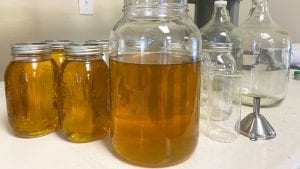
A guide to CBDA and ultrasound extraction, by Dr Tom D’Angelo
Cannabidiolic acid (CBDA)
To understand CBDA, we must first learn about cannabinoids: if you didn’t know already, cannabinoids are compounds that serve as active ingredients in the cannabis plant; and CBDA is one of them.
Once cannabinoids enter the body, they mimic the innate compounds which organically match with the receptors throughout the body. That is how they are able to replicate a wide variety of effects that can make someone feel calm, happier; or even effect appetite. When these cannabinoids are active, they are known as THC, CBG or CBD, among others. But, before they become active, they exist in their premature forms.
All cannabinoids, including THC, CBG, and CBD, first exist in an acidic form known as THCA, CBGA, and CBDA, respectively.
How is CBDA produced?
CBGA, the mother of all cannabinoids, is the original parent cannabinoid, a stem cell of sorts, from which all others are later derived. After a natural biologic reaction which occurs in the cannabis plant some CBGA turns into CBDA and THCA; and may transform into other acidic versions as well.
CBD versus CBDA
The acidic forms of cannabinoids are not as well understood as their more popular relative cannabidiol (CBD). For this reason, CBDA does not yet share the same fame as CBD. Does this mean CBDA is less effective than CBD? Absolutely not. CBDA not only affects the same receptors as CBD, but that it also works for many medical conditions using doses 10 to 1000 times smaller than the typical doses of CBD. In addition, CBDA can be easily converted into CBD through a process that involves heating CBDA to transform a small component of the molecule.
Is CBDA effective on its own?
Even though some researchers have long viewed CBDA as inactive on its own, recent research including our own has shown how powerful CBDA can be in the right hands. According to the latest research, CBDA can help treat many medical concerns, including the following:
Depression
It is known that CBD helps to relieve depression, but fortunately the same can be said for its acidic form too. Recent research suggests that CBDA not only affects the same receptors as CBD, but that it also has antidepressant effects at low doses — dramatically smaller than typical doses of CBD.
Epilepsy
According to GW Pharmaceuticals, CBDA helps to treat epilepsy, just like the CBD-derived epilepsy drug, Epidiolex, however requiring much smaller doses.
Many studies are still ongoing, and researchers are experimenting with creating a perfect combination of CBD and CBDA, because:
- CBD may produce long-lasting effects but not fast enough; and
- CBDA produces fast effects, but often for a shorter duration.
If researchers are able to balance these two cannabinoids, then the result may be a remarkably effective option for treating epilepsy.
Nausea
Nausea is controlled by the same receptors that control anxiety and wellbeing. CBDA interacts with these receptors in a comparable way to CBD to temper the feelings of nausea and help to prevent vomiting: recent research concludes that CBDA is more effective than CBD for reducing nausea because of its rapid onset.
Breast cancer
In 2012 a study conducted at Hokuriku University in Japan produced results which cautiously suggested that CBDA may have some effect in suppressing the growth of an aggressive form of breast cancer. While this research, along with some other studies, indicate that CBDA could help arrest the spread of breast cancer, more studies are needed to confirm any such claim.
Anti-inflammatory
As a COX-2 inhibitor, CBDA is an excellent anti-inflammatory. Non-steroidal anti-inflammatory drugs (NSAIDS) such as ibuprofen and aspirin target COX-2 receptors for reducing inflammation. Even when used correctly, NSAIDS carry the risk of damage and serious issues due to adverse effects. According to a growing body of research, CBDA does a better job of blocking COX-2 than even CBD or THC, and with fewer side effects.
Fast reaction with CBDA
Many people see faster reaction times after taking the stabilised CBDA. “It’s usual for people to notice the difference in as little as 10 to 15 minutes topically and 20 to 30 minutes when taken sublingually, compared to hours and days with CBD. For many, the relief of pain and inflammation is quick,” said Tim Doran, President of Whole Health Products.
Ultrasonic extraction: the best method to extract cannabis
When it comes to cannabis extraction, there is always a need for innovation at both the consumer and commercial levels. This continuous need for innovation has led us to discover popular methods of extraction, including closed loop extraction and rosin presses. Out of these methods, the best one we have discovered to date is ultrasonic extraction (UE), in which ultrasonic vibrations produce concentrates faster while achieving the highest potency.
How UE works
Unlike most cannabis extraction methods, UE uses oils as an extraction medium instead of hydrocarbons. Through the process, UE yields concentrate with higher potency and a more robust cannabinoid profile.
During the process, we rapidly pulsate ultrasonic vibrations within the extraction medium, typically olive or coconut oil, to penetrate the integrity of the cellular walls without damaging the precious terpenes and cannabinoids. As a result, we can collect the compounds without harming them in any way — a task which is borderline impossible with hydrocarbons.
Properties of ultrasonic extracted concentrates
As we have already explained, ultrasonic cannabis extraction does not harm the precious terpenes and cannabinoids. The extracted concentrates are full spectrum and are nearly 100% identical to the original flower. Ultrasonic extracted concentrates have a similar smell, taste, and even psychoactive effects as their starting flower but with nearly seven times the original potency.
Are there any downsides to UE?
Generally, ultrasonic extraction is safe because there are no known side effects of using this process for cannabis extraction. However, using UE with a solvent such as propane can be risky. UE is entirely safe, as it uses oils which are known to mix well.
Is UE an easy method?
In a nutshell, no. Ultrasonic extraction is difficult at industrial levels, because extractors have to worry about maintaining a low temperature during extraction. Keeping the temperature low in the medium during the extraction process is no easy feat. It is much more complicated than it sounds because of the many complex steps involved.
Conclusion
Of all the cannabis extraction methods, ultrasonic extraction is the cream of the crop. It is both fast and effective, as it produces the strongest concentrates in the least amount of time.
Now that you know how CBDA and ultrasonic extraction help create high-end products, please check out our full spectrum CBDA distillate which is perfect for creating topicals and tinctures.
Why choose Cosaint Nectar?
Our goal is to help you create stellar products that your business needs to succeed!
You should choose Cosaint Nectar CBDA distillates because of the following two reasons:
- Far superior quality; and
- Competitive pricing.
By using stabilised CBDA distillate in your product (whether a topical or a tincture), you ensure that it will effectively manage pain and inflammation to keep your customers happy.
Increase the potency of any of your products for a fraction of a cent per milligramme of CBDA today.
Cosaint Nectar Stabilised CBDA is available in the following forms:
- Litres containing over 600,000mg stabilised CBDA;
- White label bottled products in custom and house formulas – choose from over 100 white labelled CBDA topical and tincture products; and
- Custom formulary available for use in finished products, as well as high potency distillate.
New products expected for the second quarter of 2020 include:
- Medical grade custom litres of stabilised CBDA;
- Stabilised CBGA and THCA by the litre;
- Custom blends of CBDA, CBD, CBGA and THCA; and
- Our partner FDA facility is set to begin shipping stabilised CBDA worldwide for the medical cannabis industry.
Please contact us via phone or email: we will be happy to discuss your formulary needs and create your dream distillate for you.
Whole Health Products, headquartered in California, is the producer of Cosaint Nectar™ CBDA. Whole Health is a 22-year supplement supplier with over eight years of experience manufacturing supplements within fully compliant GMP facilities.
All our cannabinoid products are created in GMP Facilities in the United States. In 2018, our CBDA line was created without the use of additional chemicals. After more than three years of research and development, in 2020, we began delivering the stabilised CBDA distillate.
Our current facilities can manage over 20,000 litres of product per month without expansion; and all products come with industry leading quality assurance.
If you need distribution through US FDA-registered facilities, then we have you covered.
Philip Tarazi
CEO
Cosaint Nectar, a brand of Whole Health Products
+1 415 417 2232
bulk@cosaintnectar.com
This article will appear in the second issue of Medical Cannabis Network which is out in April. Click here to get your free subscription today.





